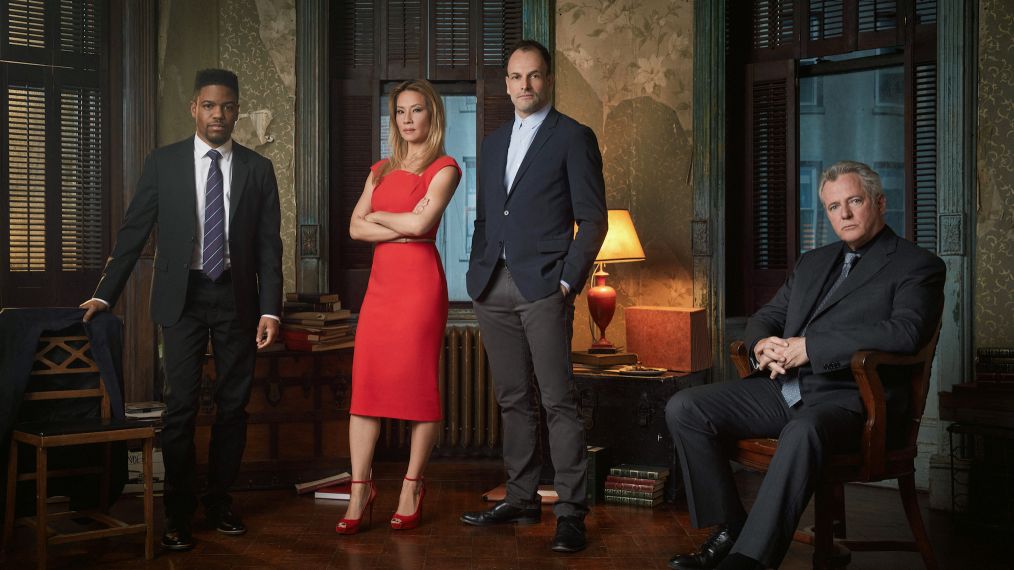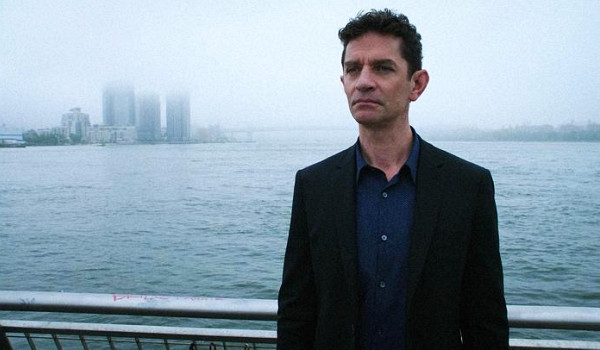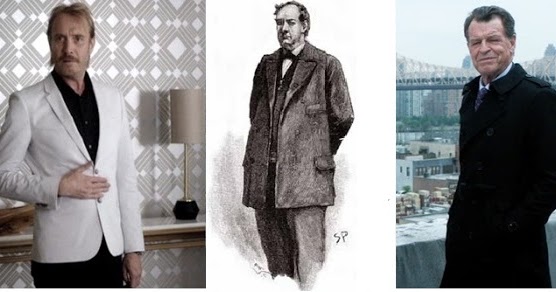Early last spring, at one of our Zoom-togethers with my pals Jim and Sergio, we talked TV as we often do, and Sergio said, not for the first time, “You guys really should watch Elementary.” Now I like Sherlock Holmes as much as the next nerd, the show was available to binge on Hulu, and it’s not like my dance card has been full these days. So I watched Season One.
And Season Two . . .
And Three . . .
And Four . . .
And Five . . .
And Six . . .
And now we come to the seventh and final chapter in our saga of Sherlock in Times Square. I can’t say a lot of folks jumped in the cab with me (in fact, one guy on Facebook tried to have the car impounded!), Sergio was always there – thank you, Sergio – and I had fun sifting through the ups and downs of this series.
The final season embodies that roller coaster ride pretty well. Like the final seasons of so many network series, it probably shouldn’t have happened. It’s shorter – and weaker – than all the others. But it reminds those of us who have watched a lot (no, make that a lot) of television in our lives how invested we get in the characters and formulas of our shows.
The problem for me with Elementary is that I was never that invested in the formula; it was everything on the fringes that appealed to me. Breaking the show down into its three major components:
- The Case of the Week: this was my least favorite part of Elementary, for many reasons. They were, for the most part, utterly formulaic, which should have been expected. This was, first and foremost, a CBS procedural, geared to a traditional market that likes to know exactly what it’s going to see when it turns on the set.
This is not to say that some of the cases weren’t clever or that many were exceedingly fun to watch. But there were few surprises in store, and it became something of a lark for me to jump out of my seat when a character was introduced, point my finger and shout, “Killer!” or “Thou art the man!” or “J’accuse!”
It worked every time.
- The Season-Long Arc: back in the early days of television, there was very little interest in long-form storytelling. If you were into continuing sagas, you were pretty much restricted to soap operas. But gradually this changed, first with the introduction of night-time soaps (like CBS’ own Dallas) and the understanding that change and growth in a character can be interesting. On M*A*S*H, for instance, as actors left and were replaced, relationships had to change, and long-running characters like Hawkeye (Alan Alda) and “Hot Lips” (Loretta Swit) changed with them.
I remember when Dick Wolf’s Law and Order premiered, and the word was out that he was rejecting the new tendency of series to explore characters in a longer arc and maintaining the classic “all in one episode” feel of the procedural. He did that with every series of his – except SVU, which turned out to be my favorite. I like to see events hang over and have an effect; I like to see characters change and grow.
The arcs on Elementary varied in quality for me. They ranged from the sublime (Mycroft!!!) to the fragmented and frustrating (Michael . . . ) I never warmed to Kitty Winters, but I loved John Noble’s performance as Morland Holmes, Sherlock’s dad. Something sinister hung over the actor’s face in every scene her played – and then he turned out to be . . . just a dad.
- The Core Characters: In the end, it all boiled down to Sherlock, Joan, Gregson and Bell. For seven seasons, they fought together and, a few time, fought each other. When we met Sherlock Holmes, he was just coming down from a years-long heroin high. He was abrasive and annoying. He seemed impervious to, and uninterested in, real human interaction. By series end, he had resolved a lot of his complicated feelings for his family and his ex-girlfriend, the psychopathic criminal mastermind, and he had three good friends.
This was, for me, the best part of Elementary.

When last we left our Fab Foursome at the end of Season Six, they were a foursome no longer, both on the screen and potentially off. As related last time, the negotiations between CBS and creator Robert Doherty were complicated. That season was shrunk down to thirteen episodes leading to cancellation, and then it got stretched out to twenty-one episodes with its future left unclear. This wreaked havoc with the storytelling, but even though it felt bad to separate Holmes and Watson from their partners at the NYPD, it also felt rather good to relocate them to London, where they dwelt side by side at 221A and B Baker Street and worked for Scotland Yard.
And that’s a wrap.
And then CBS ordered another season. Again, they would limit Doherty to thirteen episodes in order to really wrap up his modern take on the Holmes saga. More character development. More cases-of-the-week! A final season arc!!!
The end result? Well, the bad news is that Season 7 was the bumpiest one of all. The good news, I suppose, is that Doherty was able to give us a happier ending for our four leading characters. Was it a better ending though? I wonder . . .
Usually at this point, I would break the discussion down on an episode-by-episode basis. I actually did that in my first draft. But honestly, the Case-of-the-Week aspect of this season is its weakest element. There’s the Case of the Disfigured Model, and the one about the moonshine still, the murdered jogger, and the giant dead pig (in Central Park, no less). Most of the cases were forgotten moments after I watched them. Episode Four, “Red Light, Green Light,” was a good one: the twists were complex and interesting, and the whodunnit element, always the least satisfying aspect, here was a minor element to the larger story.
Most of the time, however, these cases stuck like glue to formula: bizarre murder, first investigation where Holmes blasts apart any perceptions the initial cops believed, interview, interview (“Thou are the man!”), interview. All of this is interspersed with some Season Arc byplay. There’s a second murder. There’s a False Accusation. And then Holmes and Watson invite the suspect I pegged as the killer a half hour earlier to the station (sometimes, for variety’s sake, they visit the killer), and they lay out their case. And every time – no, every time – the killer denies, denies, denies and never confesses. I think this was mainly due to the forty-three minute running time and the writers’ belief that a confession would merely be repetitive. But just once – just once – I wanted the killer to respond, even if it was with a shaken fist and a “Damn you, Sherlock Holmes!”
The Season Arc started out strong and then grew – for me, at least – extremely problematic. It began with the event that brought our Foursome back together: Captain Gregson gets shot in the line of duty. Aidan Quinn spends the first half of the season in the hospital on a ventilator as Watson returns to the U.S. (eagerly, for she was homesick) and Holmes sneaks back in (carefully because, if you remember, he had taken the wrap for Watson over Michael’s murder – even though the real killer was Gregson’s daughter.)
Grief and worry have a way of taking four people who have been torn asunder and putting them back together, but the way Sherlock manages to clear both his and Joan’s record has to be chalked off to CPDB (Convenient Plot Device Bulls**t). Never mind, they’re all together again. Gregson’s assailant is quickly found, and it becomes clear to us before it does to our heroes that something bigger is afoot.
Eventually, it all leads to the season’s Big Bad, tech mogul Odin Reichenbach. He is played by James Frain who looks a bit like James Marsters, who wowed us all in the 90’s for six seasons of Buffy the Vampire Slayer as the evil doofus vampire, Spike. But they are different people entirely. I know that!!! Anyway . . . Reichenbach reaches out to Holmes and Watson in Episode 5 by making a donation to Joan’s favorite charity and asking in return for a personal favor. It’s all a ruse for him to check the pair out and see if they will be friends or foes of his overarching plot to utilize his command over technology to track people down over social media and pinpoint two groups he feels are special. The first group? Potential terrorists, school shooters, serial killers, and those with murder in their heart. And the second? Those citizens so disaffected with our government’s inability to prevent all this unnatural death that they could be easily turned by Reichenbach into willing assassins of bad guys.
The whole scheme may be crazy, but I have to say that it was especially disgusting to watch, given how much it seems to mirror what’s actually going on in our society today. So, call Doherty and his writers prescient or “lucky” but they are clearly tapping into something here to which a great many viewers would be able to relate, on one side or the other.
Still, while there are twists and turns galore here, some of them kind of cool (a pivotal series long character is revealed to be in cahoots with Reichenbach, and the way that sorts itself out is well played), but the whole story is at once overly complex and underdeveloped. There is simply not enough time allotted to this shortened season for this storyline to play out in a satisfactory manner. Still, it does reach its conclusion, the villain is vanquished (look, they had to have an episode called “Reichenbach Falls!!”), and it leaves our characters as far apart from each other as they were at the start of the season – with one episode to go.
That brings us to the final element, The Core Characters. While I feel that too much feels cramped and rushed, the interplay between Holmes and Watson and Gregson and Bell is the best thing Season 7 has got going for it. Yes, we have blonde Lucy Liu (because she was bored with her hair), but at least the explanation for that is satisfactory – and I did get used to it. A lot of past characters are brought back for sentiment’s sake, with middling success. Kitty Winter shows up at the beginning, but she’s a completely different character from the woman we knew. My beloved Mycroft’s fate is revealed offscreen, and the moment is wasted. It is always a pleasure to see John Noble onscreen, and if – SPOILERS – you’re going to kill off an important character, at least Noble showed up for it. And then there’s the case that brings back a character from three seasons ago, a young con artist whom I feel we’re supposed to feel more about than we do here – I could barely remember her, and I was binge watching!
In the final episode, we get ten episodes worth of story jammed into forty-three minutes. We have a little Moriarty to stir up (very little) suspense; we see Tommy Gregson retire (to take care of his MS-inflicted wife, who also dies offscreen) and Detective Bell promoted to precinct Captain. We finally see Joan adopt a child, which is nice, and then she is stricken with cancer. This was the only way they could get Sherlock to stay? And in the end, they try to fool us when they show Holmes attending a woman’s funeral – but of course it can’t be Watson who has died. The best shot is the final one, suggesting that Holmes and Watson will continue as before, solving crimes together and bolstering the reputation of the NYPD. Two Sleuths and a Baby . . .
I’ve enjoyed my viewing of Elementary. It never rose above good series fare, and it certainly doesn’t match the brilliance of CBS’ best recent series, The Good Wife. But It was enjoyable and often clever, with strong performances by its leads. I would call it one of the top procedural series of the last twenty years and a nice reminder that the original Holmes will keep inspiring writers and producers for a long time.


I’ve never been a fan of extended story arcs. A two- or three-episode story arc can work quite well but season-long story arcs do nothing for me. I know that most people disagree with me, but for my money the soap opera format is best left to soap operas.
Extended story arcs are one of the main reasons I stopped watching contemporary television.
I know, I’m a dinosaur, but I think long story arcs encourage lazy sloppy writing.
LikeLike
I love extended story arcs, and I am sure that Elementary would NOT change your mind. Dickens wrote in this manner, and I think he was often quite lazy and sloppy – but I love him anyway!
LikeLike
Not seen the show beyond Season 3ish – keep meaning to come back to it – but just to say, James Frain was not Spike, that was James Marsters…
LikeLike
Was just going to say, not Spike as I remember the lad …😆
LikeLike
That . . . . . . . . . . . . is an embarrassing mistake I should not have made. I will correct it at once and everyone will wonder what the #&R$ your comment meant!
LikeLiked by 1 person
I think you are pretty much on the money here Brad, as ever. On re-watching season 7, I decided the Odin storyline, which I wasn’t too sure about initially, was cleverer and more subtle than I first thought – but the reduced number of episodes (the final season was ordered by CBS incredibly late in the day) does hurt it. The final scene with Noble as Morland is really crushing. I think the final few scenes of the show (which uses the SIX FEET UNDER finale playbook and makes the condensed nature of the season even more apparent) are very moving – Gregson gets a great send off and the Delvecchio solution offers something we realised we had never been given before (the even sway at the end of the shot if you look closely enough). And I love the smile of satisfaction that Sherlock has when he mentions the confirmation in the lift. Such a small thing but Miller does it superbly. Thanks for looking at the whole show so closely – I got so much out of it. Now if you wouldn’t mind doing the same for the fabulous MEDIUM I’d be awfully grateful 😁
LikeLike
Dude . . .!!!! PLEASE!!!!!
LikeLike
Had to be done 😆 Love that show!
LikeLiked by 1 person
PS And thanks for the very kind shout outs 🙂
LikeLiked by 1 person
Hey, I come along on these remembrances, too, but I’m only up to season 6 and so can’t keep pace with your thoughts. Still, like you, I remain grateful to Sergio for the nudge into this show; would have been unlikely to take the plunge but for him, and I’ve enjoyed it hugely to date.
LikeLike